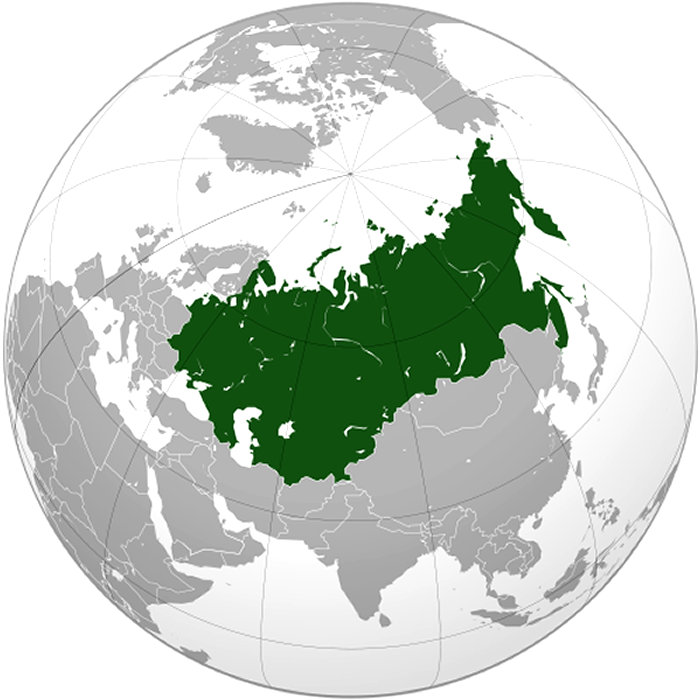 Soviet Union
Soviet Union

(Text by Duane R. Hurst © 2013)
Click on a link to view its information and pictures.
|
SOVIET UNION LINKS: Significant Event: Revolution of 1917 AD World War II (1941 Nazi Invasion) Main Cities: Moscow; Saint Petersburg Time: 1922-1991 AD Language: Russian Personage: Gorbachev; Lenin; Stalin Religion: Atheism; Christianity Related Country: Russia Brief History: I have included only a few items concerning the history of this empire. A good source for more details can be found on Wikipedia or in history books. |
|
|
RUSSIAN REVOLUTION:
During World War I, many demoralized Russian soldiers deserted. People were dissatisfied with Tsar Nicholas II and Russian nobility. Communist/socialist radicals received money and encouragement from western bankers, particularly via Carnegie and Rockefeller foundations, to stage a Bolshevik Revolution in 1917 AD. The United States government's Reese Committee of 1953 AD documented such collaboration. Vladimir Lenin safely traveled across warring Germany in a sealed train with 5-6 million dollars in gold that he obtained from international banker, Max Warburg. The German government favored the revolution, which they expected would take Russian troops out of the war. Prince Georgy Lvov became head of the Russian Provisional Government upon the Tsar's abdication. Lvov intended to pattern a constitution based upon that of the United States. However, Alexander Kerensky replaced Lvov and served until Bolsheviks overthrew the government in October 1917 AD. They formed the Cheka (later called GPU, OGPU, MVD, NKVD and KGB) state security service. Bolsheviks clashed with White Russian forces, led by general Alexander Kolchak, in a civil war until his capture and execution. United States president Woodrow Wilson ordered the withdrawal of an American expeditionary force that had aided White Russians in Siberia. He also unconstitutionally ceded an American island, Wrangel, to the Soviets. FORMATION OF THE SOVIET UNION: On 29 December 1922, delegates from various regions signed documents that formed the Union of Soviet Socialist Republics. The government seized land, agricultural products, money and anything deemed of benefit to the state. Food shortages were widespread and people died combating draconian actions that Lenin dictated. On 3 April 1922 AD, Joseph Stalin became General Secretary of the Communist Party. He started various "Five-Year Plans" designed to rebuild the economy. His forced collectivization of all farms caused more widespread starvation and millions of kulaks died or were sent to gulags. The state also murdered a minimum of 10-11 million people. WORLD WAR II: Stalin and Adolf Hitler signed a nonaggression pact wherein they secretly agreed to partition Poland and allowed the Soviets to seize the Baltic states. Stalin later ordered forces to attack Finland. Despite the pact, Nazi intentions focused against the Soviet Union. On 22 June 1941 AD, Hitler launched Operation Barbarossa, a full-scale invasion of the Soviet Union. Initially, German troops occupied Baltic states and the regions of modern Belarus and Ukraine. The advance stalled at Moscow and Leningrad, which Hitler ordered destroyed and all people massacred. Soviet troops suffered huge losses, in part due to Stalin's purge of experienced officers. German forces finally withdrew after suffering defeats at Kursk and Stalingrad. Massive infusion of American material and weaponry aided the Soviet defense and counter-offense. The Soviet Union lost approximately 27 million people during the war. During an allied Yalta Conference (4-11 February 1945 AD), Winston Churchill, Franklin Roosevelt and Stalin divided Europe into spheres of influence. Germany was to be partitioned between the allies. After the war, Stalin maintained troops in Eastern Europe and built the Berlin Wall. A "Cold War" existed between the Soviet Bloc and Western powers. COLD WAR: Nikita Khrushchev succeeded to Stalin after a power struggle for control of the Soviet Union and denounced previous repressive actions. However, he ordered Soviet troops to crush uprisings in Hungary and Poland in 1956 AD. Due to a perceived rapprochement with the west, Mao Zedong distanced China from the Soviet Union. Other Communist regimes such as Albania and Cambodia followed suit. In 1962 AD, Fidel Castro allowed the Soviets to install nuclear missiles on Cuba. American president, John Kennedy, ordered an embargo and threatened to have troops interdict any such weapons. A nuclear crisis between the two superpowers ended after Khrushchev agreed to withdraw the missiles. Khrushchev encouraged a space program that shocked the world with the first orbiting satellite, Sputnik 1 in 1957 AD. Soviet scientists later sent the first person in a manned spacecraft, Yuri Gagarin, and the first to walk in space, Alexey Leonov. However, the United States succeeded in making the first Moon Landing on 20 July 1969 AD. GORBACHEV ERA AND COLLAPSE: During the Reagan administration, Saudi Arabia lowered oil prices, which caused a shortage of hard currency and hampered Soviet trade. Soviets selected Mikhail Gorbachev in 1985 AD to head the Soviet Union. He withdrew troops from Afghanistan, removed the Berlin Wall, and allowed numerous Soviet states to declare sovereignty. Soviet-controlled East Germany also reunited with Germany. Gorbachev's successor, Boris Yeltsin, presided over dissolution of the Soviet Union on 25 December 1991 AD. |
|
|
© Page Publisher: Duane R. Hurst
|


